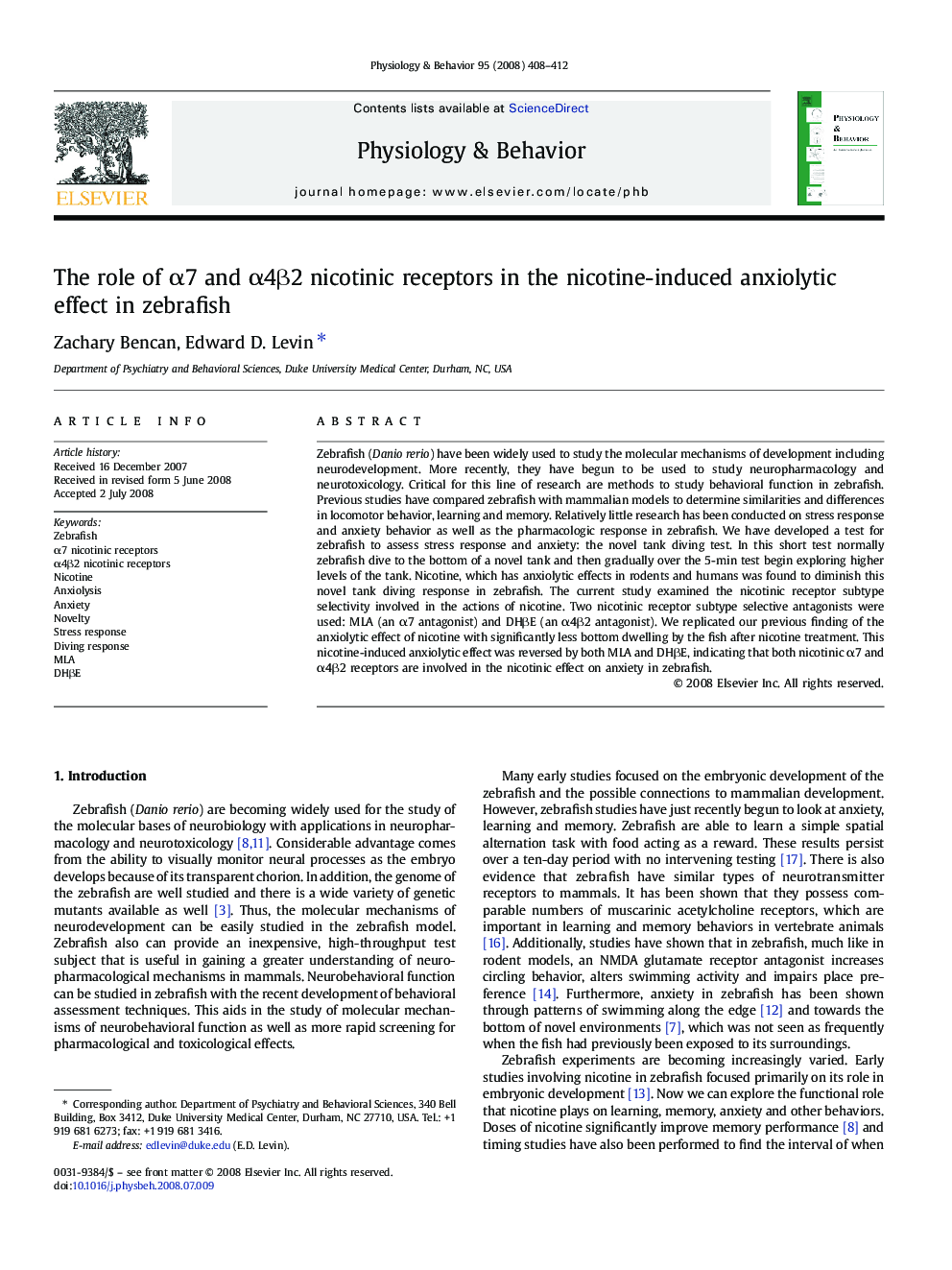| کد مقاله | کد نشریه | سال انتشار | مقاله انگلیسی | نسخه تمام متن |
|---|---|---|---|---|
| 2845335 | 1166388 | 2008 | 5 صفحه PDF | دانلود رایگان |

Zebrafish (Danio rerio) have been widely used to study the molecular mechanisms of development including neurodevelopment. More recently, they have begun to be used to study neuropharmacology and neurotoxicology. Critical for this line of research are methods to study behavioral function in zebrafish. Previous studies have compared zebrafish with mammalian models to determine similarities and differences in locomotor behavior, learning and memory. Relatively little research has been conducted on stress response and anxiety behavior as well as the pharmacologic response in zebrafish. We have developed a test for zebrafish to assess stress response and anxiety: the novel tank diving test. In this short test normally zebrafish dive to the bottom of a novel tank and then gradually over the 5-min test begin exploring higher levels of the tank. Nicotine, which has anxiolytic effects in rodents and humans was found to diminish this novel tank diving response in zebrafish. The current study examined the nicotinic receptor subtype selectivity involved in the actions of nicotine. Two nicotinic receptor subtype selective antagonists were used: MLA (an α7 antagonist) and DHβE (an α4β2 antagonist). We replicated our previous finding of the anxiolytic effect of nicotine with significantly less bottom dwelling by the fish after nicotine treatment. This nicotine-induced anxiolytic effect was reversed by both MLA and DHβE, indicating that both nicotinic α7 and α4β2 receptors are involved in the nicotinic effect on anxiety in zebrafish.
Journal: Physiology & Behavior - Volume 95, Issue 3, 20 October 2008, Pages 408–412